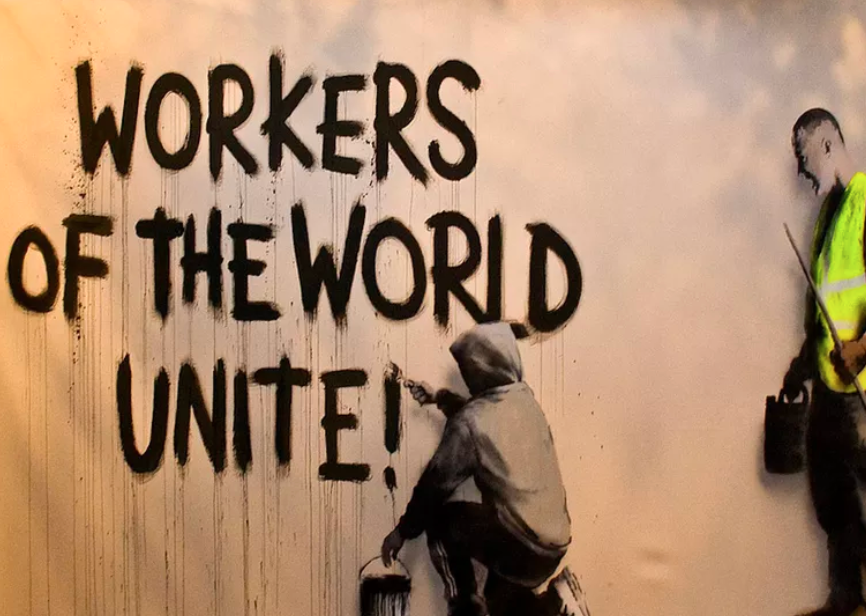I Read The Communist Manifesto For the First Time
June 12, 2022
The ideas of Marx and Engles, writers of The Communist Manifesto, have stimulated cries afresh to rethink our social, economic, and political systems in order to bring about human equality rather than corruption. But because of its controversial nature, most people don’t know the true contents of the Manifesto, leading to false beliefs and erroneous assumptions.
The Communist Manifesto, written in 1848, established the basis for the modern communism movement. At the time, it served to persuade and rally laborers to revolt and overthrow the bourgeoisie (the owners of capital). The manifesto argued that capitalism would ultimately self-destruct, be replaced with socialism, and eventually communism. Today, however, it offers readers an early analysis and evaluation of capitalism, and its effects on the social, economic, and political lives of the proletariat, or the working class people.
Here’s 5 key things I learned
You don’t have to be a communist to read the Manifesto.
Why wouldn’t you read it? The Manifesto is an important piece of historical literature that opened society’s eyes to a new political, economical, and social idea. If anything, you’ve probably read excerpts of it here and there in your history class. Compared to other Marxist literature, it’s a relatively easy and short read. If you really sit down and read through it, it should only take you an hour or so. That being said, it may seem redundant at times, especially in the first section when Marx explains the evils of capitalism, and the cruel competition between workers to sell labor to the owners of capital. Nevertheless, Marx and Engles help explain their critiques on capitalism in an ethical way, allowing their both pre and post modern audiences to understand and digest why capitalism has become such an inhumane building block in our society.
A classless society doesn’t literally mean a classless society.
The idea of a classless society is usually the trigger for backlash from conservatives about communism. But if you actually read the contents of the Manifesto, you learn that the idea of a classless society is a society where no one is born or automatically placed in a certain social class – everyone shares the benefits of industry and work, while the state controls all property and wealth. Marx and Engles don’t ignore the distinctions that may arise because of wealth, status, education, etc. Instead, their idea was for these distinctions to be formulated by the individual human experience and one’s success in society. The two classes present in the manifesto are the proletariat (the working class), making up the majority of the society and having to work to survive, and the bourgeoisie (the capitalist class), a small group deriving profit from employing the proletariat through private ownership and exploiting labor for capital.
The Manifesto is still relevant today, even though it was written for the pre-modern audience.
It’s almost impossible to understand the Communist Manifesto unless you acknowledge the time period it was written in. In 1847, the “Communist League” had met in London, commissioning Marx and Engles to write a manifesto on behalf of the league. It was written on the eve of the 1848 German Revolution and during the 19th century when Europe was hit with massive industrialization and a huge increase in the working class. This increase led to major inequalities among the workers and the owners.
It’s argued that the manifesto is more relevant today than when it was written, which is remarkably true. With capitalism creating more and more inequalities in the world through its unsustainable use of competition, perpetuating poverty throughout developing countries and focusing on the interests of private corporations rather than the needs of their workers, the ideas of Marx and Engles are incredibly relevant. They argued that capitalism is a volatile economic system, creating economic depressions, unemployment, low wages, and increasing misery among the proletariat. Class struggle still exists, and is more prominent now than ever. The socio-economic antagonisms between the capitalists and workers are a result of exploitation under capitalism because the bourgeoisie pay the proletariat to make things for them to sell, without the workers having a say in business. All of history has been an ongoing class struggle due to too much wealth falling into the hands of the exploitative class.
“Communism will never succeed” is just not true.
The line “communism will never succeed” doesn’t give you an excuse to be ignorant towards the ideas in the pamphlet. Whenever the Communist Manifesto is brought up in any context, this is the response given and usually the reason why people refuse to read it. Just because some of the ideas in the pamphlet may be deemed unattainable in our current society, doesn’t change the fact that capitalism and exploitation doesn’t have to be the basis of our society forever. In the second section of the manifesto, Marx and Engels had ten major ideas that they wanted to implement into society, each of which connected labor and economics back to the fundamentals of human equity. For example, both men declared the right to free education for all public school children. They wanted to abolish the brutal child labor and factory system. Marxists propose that education is the cornerstone of both social and economic prosperity–free and decent education for everyone leads to the potential to vastly improve our lives through efficiency.
Though communist beliefs existed long before Marx and Engles wrote The Communist Manifesto, this document has become a source of the core ideas of communism. Oftentimes, communism, which is an ideology at heart, is confused with the development and ultimate downfall of the Soviet Union. The failure of the Soviet Union has been widely held as proof that communism does not and can never work. But the idea of communism does not mean Soviet communism. Soviet communism didn’t work for a variety of reasons, but to boil it down, they had an oppressive, bureaucratic and rigid economic system which prevented it from succeeding in the end.
The communist ideology argues against the unfair and inhumane capitalist system, while pushing for change to challenge it. In this sense, it has worked. The manifesto inspired so many workers and individuals to fight for social and economic change, to gain fairer working conditions, health care, equality and a more civil world economic system.
Communist societies and governments don’t take away your belongings.
One of the most common arguments against communism is “If we live in a communist society the government will take away your belongings! Like your jewelry and cell phone!” What I found most interesting upon reading the manifesto was that Marx and Engles actually address their skeptics, and they do this through stating that, “The distinguishing feature of Communism is not the abolition of property generally, but the abolition of bourgeois property.” Which doesn’t address everybody; instead, it addresses the capitalists who use property to make profit and for personal gain.
Personal property still exists under communism. No one is going to tell you to communally use your toothbrush, or even electronic devices like your cell phone or laptop. In both Socialist and Marxist literature, private property is referred to as a social relationship, which they saw to be the root of all social ills. To break it down: Marx saw that the capitalists created wealth by owning property, rather than the workers and employed who made the property productive and beneficial. So, what is really meant by no private property under communism is that you can own a house, a boat, an apartment, but you can’t own an entire 40 story building, a 300 room mansion or a whole garage full of trucks.
In a nutshell, private property exceeding what can only be used personally or as personal property, is not allowed under communism or socialism. This is because it breeds inequality and creates large gaps between social classes whilst also giving those who own private property substantial power over the lives of those that don’t, essentially making the rich richer and the poor poorer.
Conclusion
Regardless of your political stance, The Communist Manifesto is worth a read. Whether you agree with socialism or not, in order to argue for or against it, you must educate yourself and expose yourself to the manifesto.
If you are for communism, it’s important to understand the ideology as a whole, rather than snippets taken from out of context quotes. If you’re anti-communism, it’s a valuable read to know what exactly you’re opposing. Oftentimes, anti-communists will deem passages unreadable due to their strict political beliefs causing a lack of strong argument and empty words. The manifesto rethinks what the basis of our society is and allows for a viable and more humane alternative to capitalism and production. To read the contents of the manifesto, you’re better able to judge the validity of those who discourse about it. Written through a Utopian lens, Marx gave hope to millions of workers that the dangerous and exhaustingly exploitative lives they lived wasn’t the peak of humanity.
Because of the nature of mankind, everything is bound to come with its faults and its failures, but that doesn’t change the fact that literature is the basis of our society. It’s where we gather our opinions, find entertainment and grow as people. Aside from the backlash received, the manifesto allows for our modern society to understand what the pre-modern society looked like, and how humanity has developed and still can remain ever changing.





























scarlett • Jun 15, 2022 at 6:36 pm
i love communism
scarlett • Jun 12, 2022 at 7:52 pm
reviewing the communist manifesto was a bold move, but you did it so well! Ngl communism is looking real good rn…